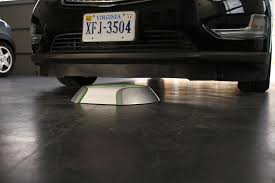In the bustling urban landscapes of today, where electric vehicles (EVs) are becoming increasingly prominent, a new player is emerging in the realm of charging technology: wireless EV charging. Imagine a city where electric vehicles recharge effortlessly while parked without the need for cumbersome cables. According to a recent report by Bloomberg Green, the global market for wireless EV charging is projected to reach $219 million by 2027, growing at a compound annual growth rate (CAGR) of 36.6%. In this article, you will discover how wireless EV charging could transform urban infrastructure, improve convenience, and pave the way for a more sustainable future.
Understanding Wireless EV Charging
What Is Wireless EV Charging?
Wireless EV charging, also known as inductive charging, uses electromagnetic fields to transfer energy between two objects—a charger and a vehicle. This seamless technology eliminates the physical connection required in traditional plug-in charging systems.
- How It Works: A charging pad is installed on the ground, which interacts with a receiving coil on the underside of the EV. This setup enables energy transfer without cables.
- Efficiency: Recent developments have brought wireless charging efficiency close to that of wired systems, with some systems achieving up to 95% efficiency, as reported by TechCrunch.
Benefits Over Traditional Charging
Wireless EV charging offers several advantages that could revolutionize urban infrastructure:
- Convenience: No more plugging and unplugging cables. Simply park over a charging pad and let the technology do the work.
- Reduced Wear and Tear: Fewer mechanical connections mean less wear on charging ports.
- Aesthetic Urban Design: Charging pads can be integrated into roads and parking lots, maintaining the aesthetic appeal of urban environments.
The Potential Impact on Urban Infrastructure
Streamlining Urban Mobility
Wireless charging could significantly streamline urban mobility by:
- Reducing Traffic Congestion: With charging pads embedded in roads, vehicles can charge while waiting at traffic lights or during brief stops, reducing the need for dedicated charging stops.
- Enhancing Public Transport Efficiency: Buses and taxis can charge continuously throughout their routes, minimizing downtime and improving operational efficiency.
Environmental and Economic Benefits
Wireless EV charging could also offer substantial environmental and economic benefits:
- Lowering Carbon Emissions: By promoting the adoption of EVs through ease of use, wireless charging contributes to reduced urban emissions.
- Cost Savings: Although initial infrastructure costs are high, reduced maintenance and streamlined operations can lead to long-term savings.
Examples and Case Studies
Several cities and companies are already exploring wireless EV charging:
- Oslo’s Taxi Network: As reported by InsideEVs, Oslo has implemented wireless charging for its electric taxis, aiming for a zero-emission fleet by 2024.
- BMW’s Inductive Charging System: BMW has introduced a wireless charging pad for their plug-in hybrid models, showcasing the practical application of this technology.
Practical Advice for Adopting Wireless EV Charging
How to Charge Your EV Wirelessly
Here’s a simple guide to using wireless EV charging:
- Ensure Compatibility: Verify that your vehicle is equipped or can be retrofitted with wireless charging capabilities.
- Locate Charging Pads: Use apps or maps provided by charging network operators to find available wireless charging locations.
- Position Your Vehicle: Align your vehicle over the charging pad to initiate the charging process automatically.
Where to Buy Wireless Charging Equipment
For those interested in installing wireless charging at home or for businesses looking to upgrade their infrastructure:
- Residential Solutions: Companies like Plugless Power offer home wireless charging systems.
- Commercial Applications: Firms such as WiTricity and Qualcomm Halo are pioneering in large-scale installations.
What to Compare When Choosing a Wireless System
When selecting a wireless EV charging system, consider:
- Efficiency Ratings: Look for systems with high efficiency to minimize energy loss.
- Installation Costs: Compare the upfront costs against long-term savings and benefits.
- Compatibility: Ensure the system is compatible with your vehicle’s make and model.
Conclusion: The Future of Urban Infrastructure
Wireless EV charging holds the promise of transforming urban infrastructure into a seamless network of energy transfer, aligning with the growing demand for sustainable solutions. By eliminating cables and enhancing convenience, this technology not only supports the widespread adoption of electric vehicles but also paves the way for smarter, cleaner cities. As CleanTechnica suggests, the integration of such advanced charging solutions could become a standard in urban planning.
As we look to the future, the question remains: How soon will wireless charging become the norm in your city? Join the conversation and share your thoughts on the potential of wireless EV charging in revolutionizing our urban environments.
As cities continue to evolve, the adoption of wireless EV technology could be the key to unlocking a sustainable and efficient urban future. Stay tuned for more updates on this exciting development in clean technology.

